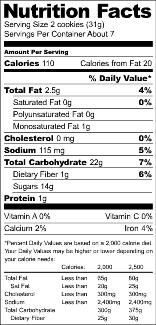 |
||||||
 |
 |
 |
||||
|
Portion Control Have you noticed that the size of muffins, candy bars, and soft drinks has grown over the years? How about portions of restaurant foods like pasta dishes, steaks, and french fries? As portion sizes grow, people tend to eat more-often more than they need to stay healthy. Larger food portions have more calories. Eating more calories than you need may lead to weight gain. Too much weight gain can put you at risk for weight-related diseases like type 2 diabetes, heart disease, and some cancers. Managing your weight calls for more than just choosing a healthful variety of foods like vegetables, fruits, grains (especially whole grains), beans, and low-fat meat, poultry, and dairy products. It also calls for looking at how much and how often you eat. This brochure shows you how to use serving sizes to help you eat just enough for you. The Difference Between a Portion and a Serving A "portion" is how much food you choose to eat, whether in a restaurant, from a package, or in your own kitchen. A "serving" is a standard amount set by the U.S. Government, or sometimes by others for recipes, cookbooks, or diet plans. There are two commonly used standards for serving sizes: The United States Department of Agriculture (USDA) Food Guide Pyramid is a healthy eating plan for people ages 2 and over. It shows the recommended number of servings to eat from each of five food groups every day to meet your nutrition needs, and it defines serving sizes. (For more information, see The Food Guide Pyramid under Additional Reading.) The Food and Drug Administration (FDA) Nutrition Facts Label
is printed on most packaged foods. It tells you how many calories
and how much fat, carbohydrate, sodium, and other nutrients
are in one serving of the food. The serving size is based
on the amount of food people say they usually eat in one sitting.
This size is often different than the serving sizes in the
Food Guide Pyramid. To see how many servings a package contains, check the "servings per container" listed on the Nutrition Facts label. You may be surprised to find that small containers often have more than one serving inside. For foods that don't have a Nutrition Facts label, such as ground beef, use a kitchen scale to measure the food in ounces (according to the Food Guide Pyramid, one serving of meat, chicken, turkey, or fish is 2 to 3 ounces). Learning to recognize standard serving sizes can help you
judge how much you are eating. When cooking for yourself,
use measuring cups and spoons to measure your usual food portions
and compare them to standard serving sizes from Nutrition
Facts labels for a week or so. Put the measured food on a
plate before you start eating. This will help you see what
one standard serving of a food looks like compared to how
much you normally eat.
After reading the food diary, you can see that this person chose sensible portion sizes for breakfast and lunch-she ate to satisfy her hunger. She had a large chocolate bar in the afternoon for emotional reasons-boredom, not in response to hunger. If you tend to eat when you are not hungry, try doing something else, like taking a break to walk around the block or call a friend, instead of eating. By 8 p.m., this person was very hungry and ate large portions of higher-fat, higher-calorie foods. If she had made an early evening snack of fruit or pretzels, she might have been less hungry at 8 p.m. and eaten less. She also may have eaten more than she needed because she was at a social event, and was not paying attention to how much she was eating. Through your diary, you can become aware of the times and reasons you eat too much, and try to make different choices in the future. Controlling Portions at Home You do not need to measure and count everything you eat for the rest of your life-just long enough to recognize standard serving sizes. Try these other ideas to help you control portions at home:
Controlling Portions while Eating Out Research shows that the more often a person eats out, the more body fat he or she has. Try to prepare more meals at home. Eat out and get take-out foods less often. When you do eat away from home, try these tips to help you control portions:
Remember... The amount of calories you eat affects your weight and health. In addition to selecting a healthful variety of foods, look at the size of the portions you eat. Choosing nutritious foods and keeping portion sizes sensible may help you reach and stay at a healthy weight. View / Print: This text is not copyrighted. ToneTeen.com encourage users to duplicate this article and distribute as many copies as desired. U.S. DEPARTMENT OF HEALTH AND
HUMAN SERVICES |
||||||||||||||||||||||||||||||||||||||||||||||||||||||||||||||||||||||||||||||||||
|
© ToneTeen.com | About Us | Privacy Policy | Terms of Use |
 The
portion size that you are used to eating may be equal to two
or three standard servings. Take a look at this Nutrition
Facts label for cookies. The serving size is two cookies,
but if you eat four cookies, you are eating two servings-and
double the calories, fat, and other nutrients in a standard
serving.
The
portion size that you are used to eating may be equal to two
or three standard servings. Take a look at this Nutrition
Facts label for cookies. The serving size is two cookies,
but if you eat four cookies, you are eating two servings-and
double the calories, fat, and other nutrients in a standard
serving.